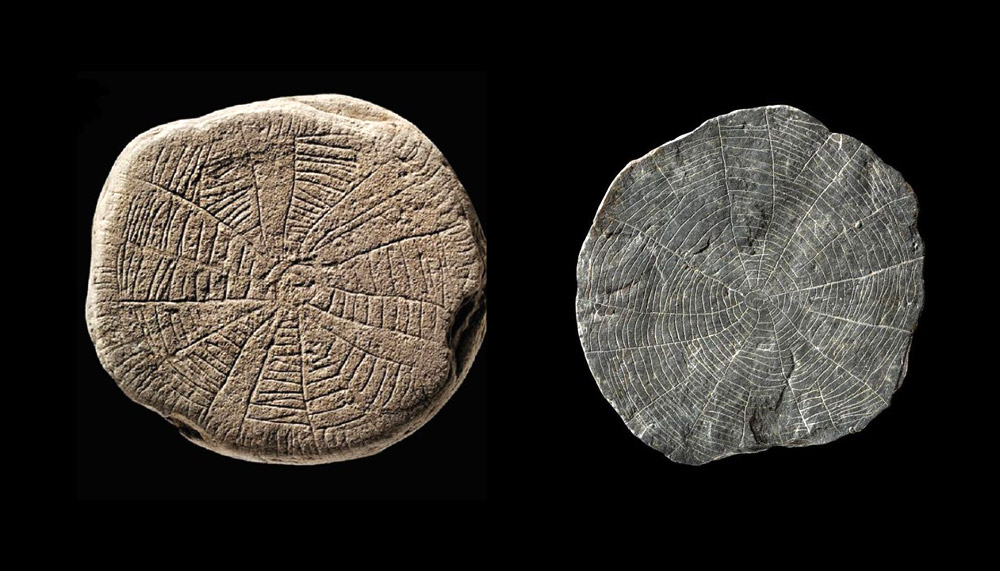Mystery of Bornholm Sunstones Solved?Archaeologists Link Ritual Offerings of Stone Plates to Ancient Volcanic Eruption

Photo: © Nationalmuseum of Denmark
Archaeologists may have uncovered the mystery behind the enigmatic “sunstones” of Bornholm, Denmark. These unique stones, engraved with solar motifs, were buried around 4,900 years ago in what appears to be a Neolithic ritual site. Recent research suggests the stones were offered as sacrifices in response to a significant volcanic eruption that darkened the skies and disrupted the climate of Northern Europe.
A Rare Archaeological Treasure
Discovered in Vasagård, a Neolithic ceremonial site on Bornholm, the sunstones—flat slabs of slate etched with radiating patterns—are unlike anything else found in Europe. A total of 614 stones have been unearthed from two crescent-shaped ditches. Experts believe they date back to around 2,900 BCE and are among the earliest evidence of a sun cult in Scandinavia.
Rune Iversen of the University of Copenhagen explained, “These sunstones, some of which show signs of being carried or used as amulets, represent an extraordinary and unique discovery in European prehistory. They indicate a profound cultural and spiritual connection to the sun.”
Buried During a Climatic Catastrophe
Archaeologists theorize the stones were buried during a large-scale ritual, coinciding with a sudden climate shift caused by a massive volcanic eruption. Studies of tree rings, lake sediments, and ice cores show a period of extreme cooling around 4,900 years ago, linked to high sulfate levels from volcanic activity.
Iversen notes, “The eruption and its effects would have been terrifying for the Neolithic people of Bornholm, who relied on the sun for agriculture. Prolonged atmospheric haze likely darkened the skies, causing poor harvests and social disruption.”
The Ritual Significance
The placement of the stones in a single, narrow layer alongside animal bones and broken pottery suggests they were part of a singular, large-scale ritual. Following this event, the Vasagård site underwent significant changes, including the construction of large wooden palisades and circular cult houses, indicating a cultural and spiritual shift.
“The people may have hoped to protect themselves from further climatic disasters or to thank the sun for returning after the haze cleared,” Iversen explained.
The End of an Era
This volcanic catastrophe may have marked the decline of the Neolithic Funnel Beaker culture in Scandinavia, as climate change and social upheaval led to the emergence of the Corded Ware culture and migration from the Eurasian steppes.
Lasse Vilien Sørensen from the Danish National Museum reflected, “The sunstones highlight how deeply connected ancient cultures were to their environment and how catastrophic events could inspire profound religious and cultural transformations.”
This discovery not only sheds light on the rituals of prehistoric societies but also emphasizes the long-standing human relationship with celestial phenomena and the impact of environmental crises on cultural evolution.
Source: University of Copenhagen, Antiquity Journal




